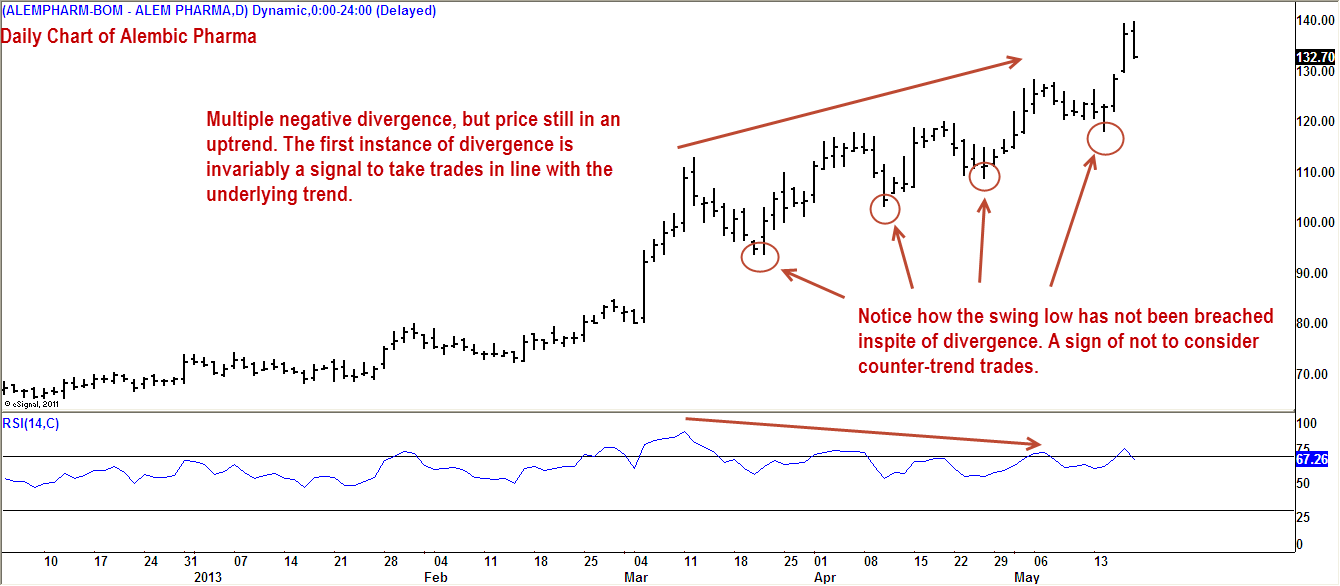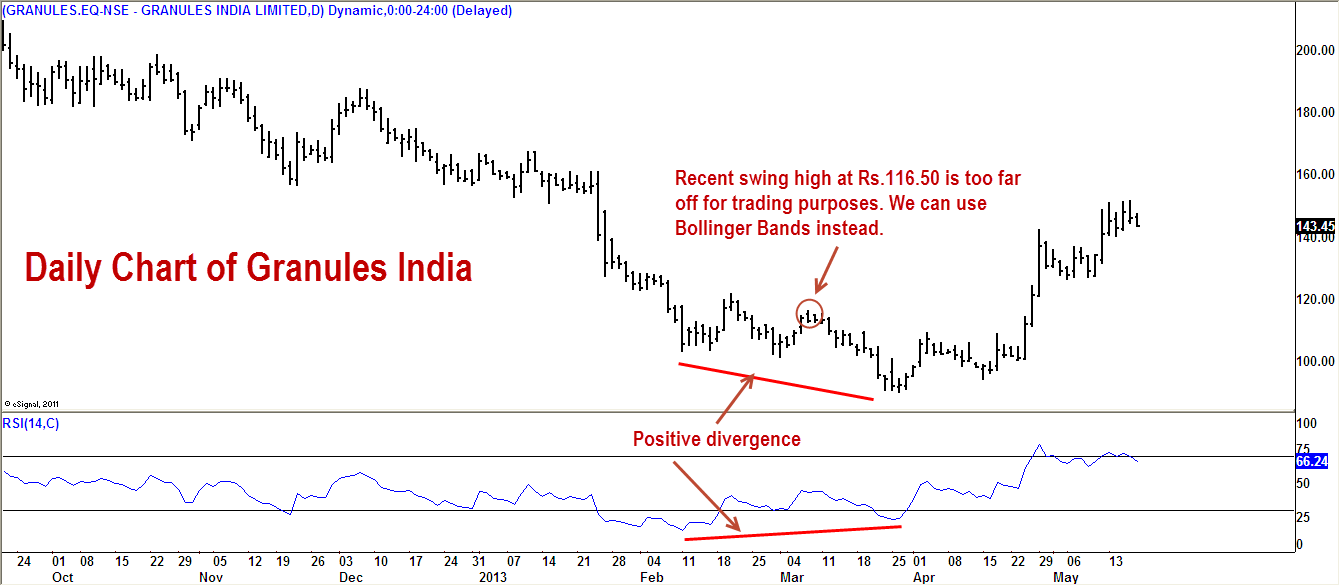Last week, we discussed the concept of divergence in the RSI. This is one of the most popularly used concept associated with the RSI. It may be recalled from last week’s post that there would invariably be a divergence before a trend reversal happens but every instance of divergence need not lead to a trend reversal.
Have a look at the daily chart of Alembic Pharma featured below.
It’s apparent from the above chart that there has been multiple instances of negative divergence but the price continues to march up. This is not unusual as the RSI is constructed in such a way that it would always throw up divergence after the first leg of a strong move.
Strong trends seldom reverse quickly and they have this tendency to perpetuate for a while. Rather than anticipating a trend reversal, it would make sense to look for a trading opportunity, along with the trend, when there is this first instance of divergence.
Once a divergence is visible, it would make sense to wait for concrete signs of reversal in price before considering counter-trend trades. A simple filter could be a breach of the latest swing high or low. In an uptrend, negative divergence would be potent if its is followed by a breach of the recent swing low and vice-versa.
From the above chart of Alembic, it is clear that the price did not fall below the swing low which is a sign that the negative divergence is not something to be relied upon.
The problem with this approach is that the most recent swing high or low may be far off and waiting for a breach of this swing point, for confirmation, might lead to a relatively late entry in a nice move. Take a look at the daily chart of Granules India featured below.
There was a nice positive divergence after which, the stock reversed and has been in an uptrend. But, the most recent swing high in this case was at Rs.116.50 and waiting for this swing high to be breached (as a filter) would be mean an entry only after price move above Rs.116.50. This is a relatively late entry if viewed in the context of the reversal point.
To avoid this trap, we can use Bollinger Bands as a filter. Next week, we will discuss this topic of Bollinger Bands as a filter in greater detail.









Whatever you want. Seriously. Everybody has a holding pioerd that they feel more comfortable with. Some people use weekly charts. some use 15-minute bars. I would probably say that it should be 4 times the smoothing factor of your indicator. If you are using a 9 day MACD, then you should see at least 36 days of chart, just to get context.
Whatever you want. Seriously. Everybody has a holding pioerd that they feel more comfortable with. Some people use weekly charts. some use 15-minute bars. I would probably say that it should be 4 times the smoothing factor of your indicator. If you are using a 9 day MACD, then you should see at least 36 days of chart, just to get context.